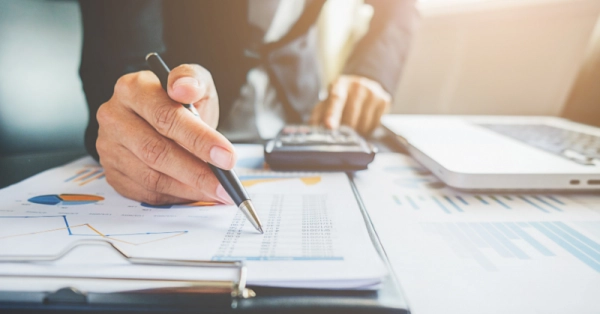Preparing for a digital transformation plan entails addressing the prerequisites. You can guarantee that your firm undergoes digital transition as smoothly as possible by developing an effective, clear, and comprehensive digital transformation plan.

A digital transformation plan is similar to a tailored road map for making significant changes to your company's operations. It necessitates a significant financial commitment, as well as time and technical knowledge. To avoid risks, it's always a good idea to make sure your teams are headed by highly trained and experienced technical leaders.
Component 1 - Management and Vision
The apparent but frequently ignored component of a digital transformation plan appears to be a successful strategy. What matters, though, is "how and who" formulates the approach. You may digitize or digitalize your firm with a basic strategy and the right tools, but transformation takes the right mentality and assistance. As a result, the first and most important component of a good digital transformation plan is strategy linked with the proper leadership. While keeping your company’s objectives in mind, visionary leadership with the right mentality may lead to a better, smoother, more cost-effective, and time-effective plan to digitally transform your firm.
Component 2 - Communication and Culture Change
While undergoing your digital transformation, prepare for a major cultural revolution. Clients and workers of a firm are typically averse to large changes, making any transformation tough to implement. Any effective digital transformation program is built on the foundation of culture. As a result, it will be beneficial if you prepare your personnel in advance. This may be accomplished with the aid of effective communication.
- Discuss the digital transformation plan with your staff and how it will benefit all stakeholders.
- To prepare your personnel, provide training sessions with them ahead of time.
- You may educate your staff ahead of time by demonstrating how important it is to match culture with new projects.
- Establish explicit training plans, offer regular updates, and maintain consistency in your attempts to reassure them.
Component 3 - Optimisation of processes
How often have you been in the middle of a task, wishing you could find a faster method to complete it? Every organization has a variety of procedures and activities that may be improved to make workflows run more smoothly and efficiently.
As a result, while developing a digital transformation plan, keep business process optimization in mind. The plan must guarantee that company processes are optimized while also reaching the objectives specified for customers and the internal team. In order to attain maximum production, the strategy must include all interrelated business activities.
Along with optimizing business processes, you must also make excellent use of the data you've accumulated over time. Let's take a look at why.
Component 4 - Curation of data
One of the primary motivations for implementing digital transformation is to alleviate pain points for both your employees and your consumers. But how will you figure out what these annoyances are?
Data integration and analysis can assist you in locating them. When developing transformation initiatives, people frequently choose their chosen technology before examining their data. This isn't how things should be done. You may know what loopholes to close on your internal team's end, but you may overlook the loopholes that your consumers face on a daily basis if you don't examine data.
Data analysis and dissemination of its findings may assist your team in identifying the best solutions to challenges, allowing you to develop a better digital transformation plan and maximize the transformation process.
Component 5 - Implementation of Technologies
One of the most important aspects in developing a digital transformation plan is identifying appropriate technology for your company. Incorporating technology into your business will necessitate a significant financial commitment. As a result, it must be done appropriately to eliminate the need for further expenses.
In order to make the greatest selection, every good digital transformation plan will always incorporate certain possibilities together with their financial needs.
You must discover the most appropriate technology whether you are upgrading existing systems, modernizing applications, or implementing totally new digital systems.
- Cloud computing
Cloud computing has several advantages for your company. It enables you to set up a virtual office, giving you the freedom to connect to your company from anywhere at any time. Access to your data has never been easier, thanks to the expanding number of web-enabled devices utilized in today's work environment (e.g. smartphones and tablets).
- Data Analytics
The act of evaluating and analyzing datasets in order to develop conclusions about the information they contain is known as data analytics. Data analytics approaches aid in the discovery of patterns in raw data and the extraction of useful insights. Businesses may use data analytics to gain real-time insights into sales, marketing, finance, product development, and other areas. It enables corporate teams to interact and produce better results. Businesses can use it to evaluate previous performance and improve future business operations. Businesses may use analytics to obtain a competitive advantage.
- Artificial intelligence
In its short decades of existence, AI has already offered both large and little advantages, and as computer science progresses, you may expect even more interesting new advancements and discoveries. These complicated devices have improved corporate efficiency and made everyday living a little easier. AI applications will very certainly develop with time, from Alexa to large data warehousing to industry-leading speech recognition technologies.























